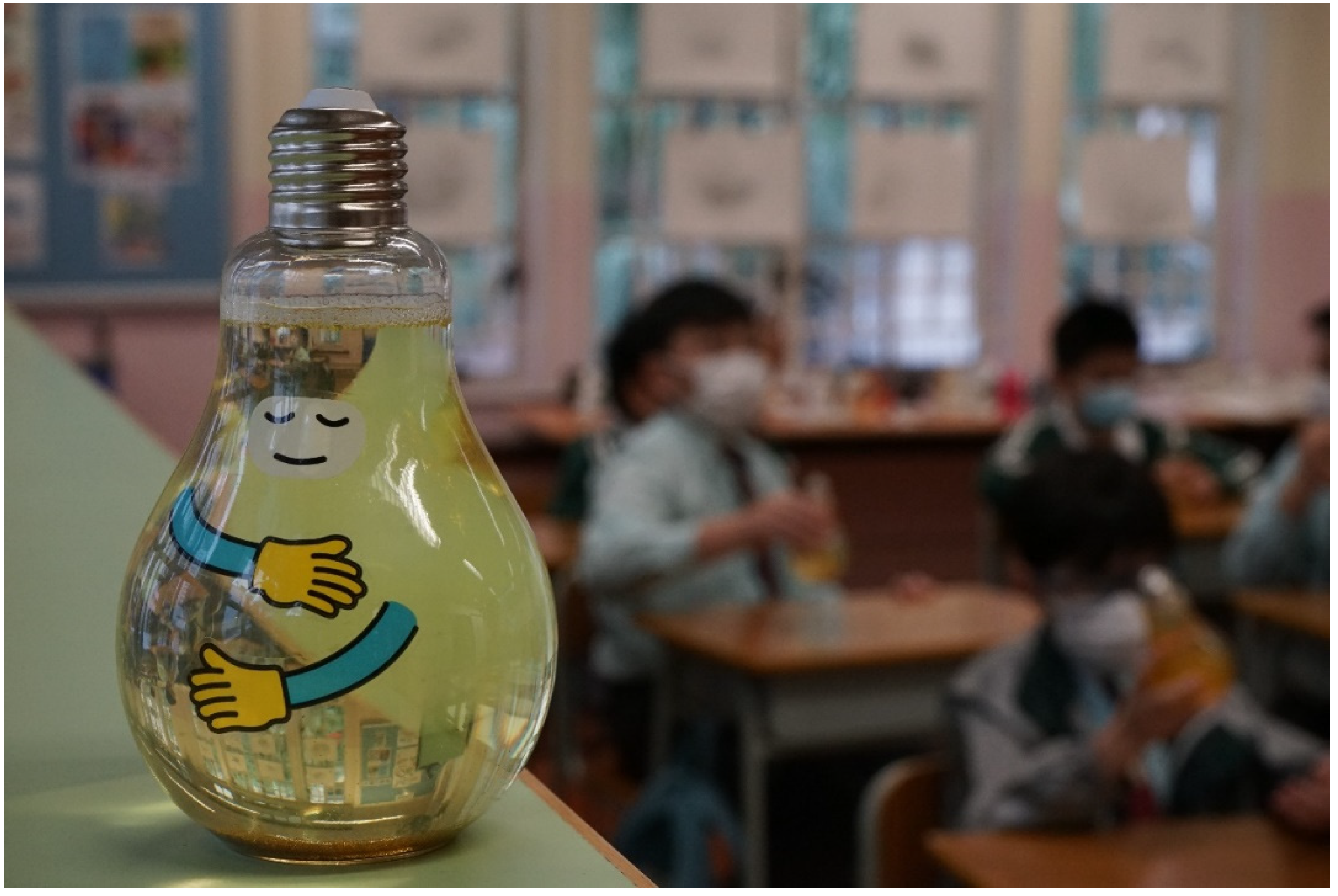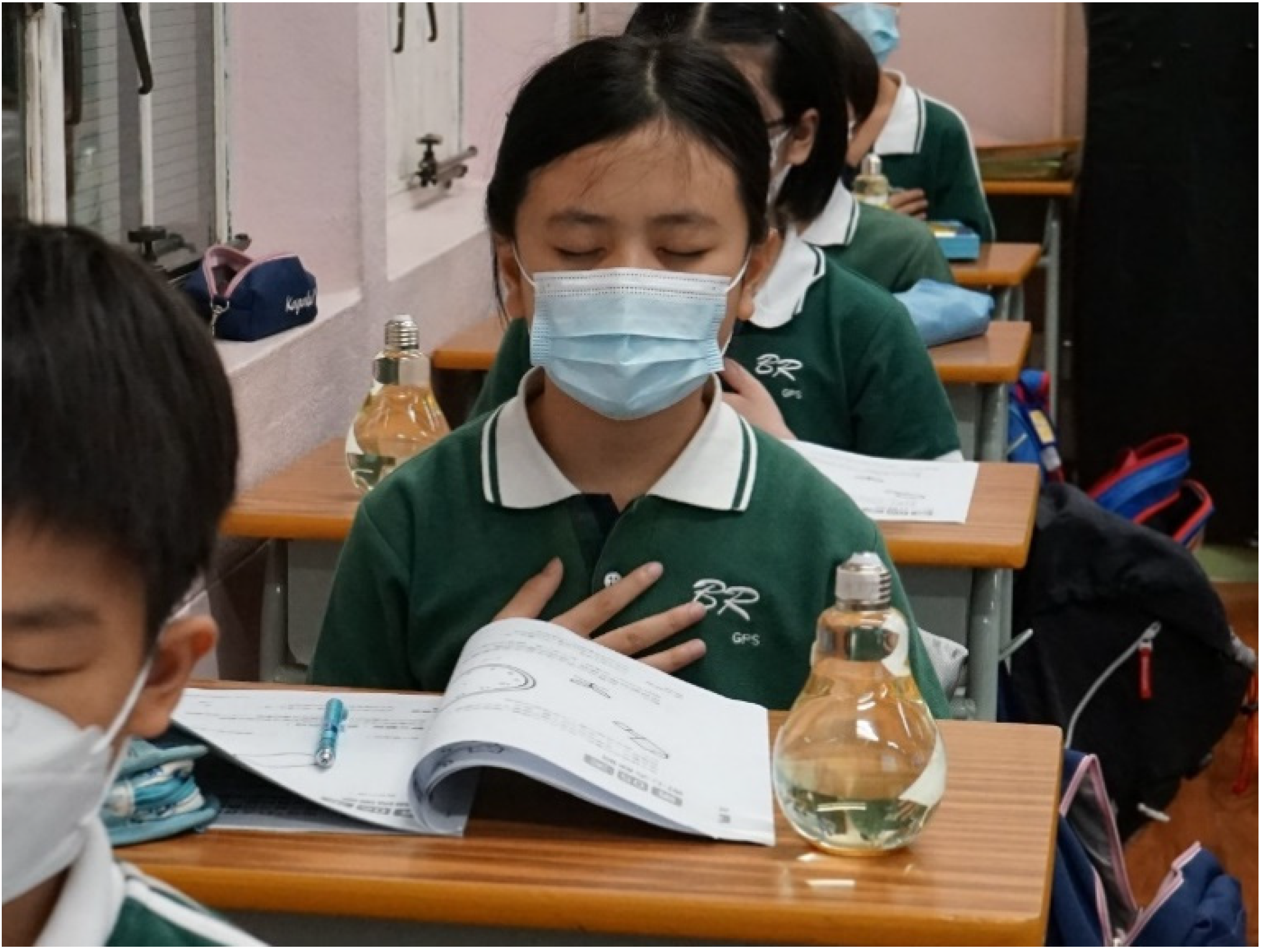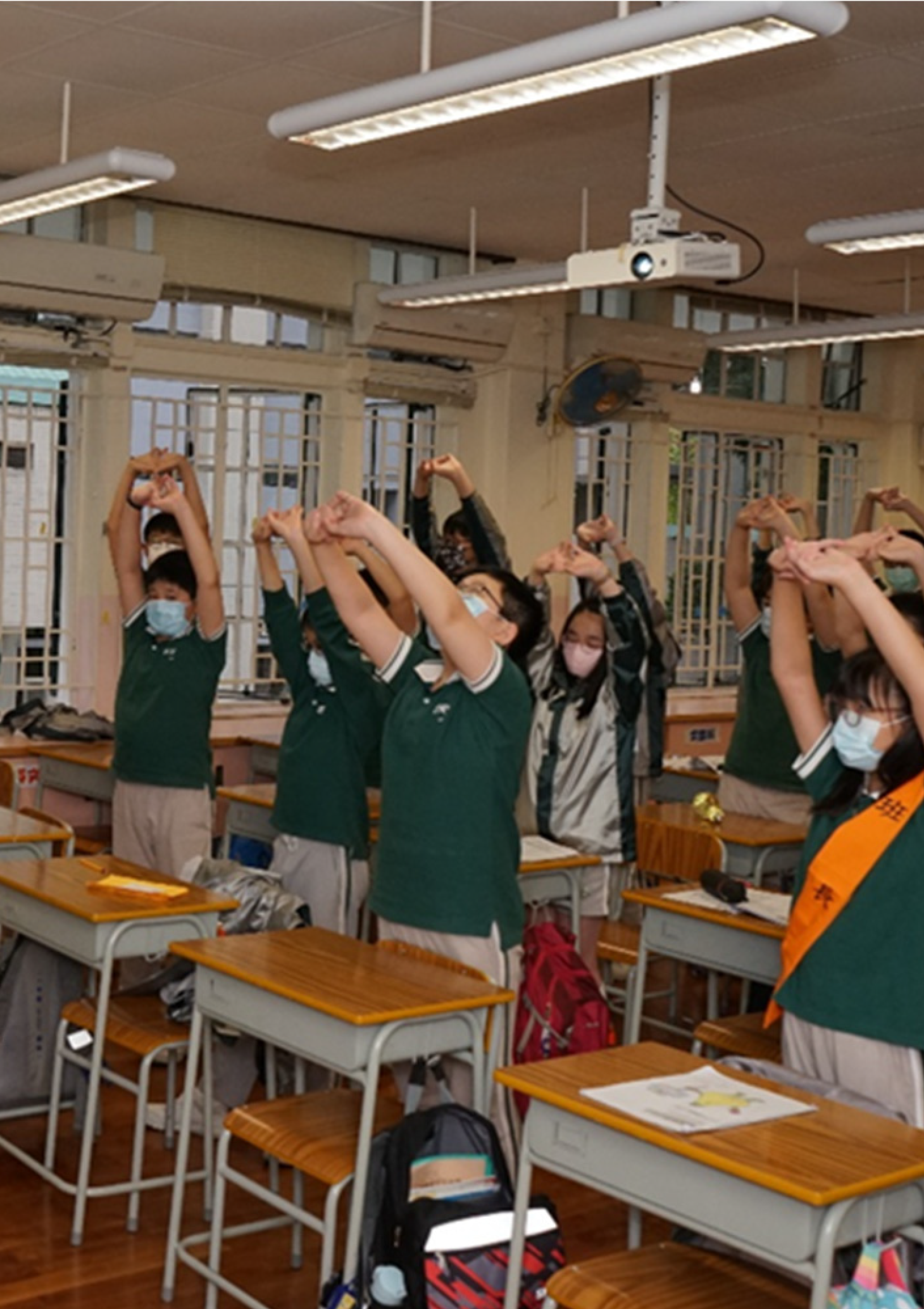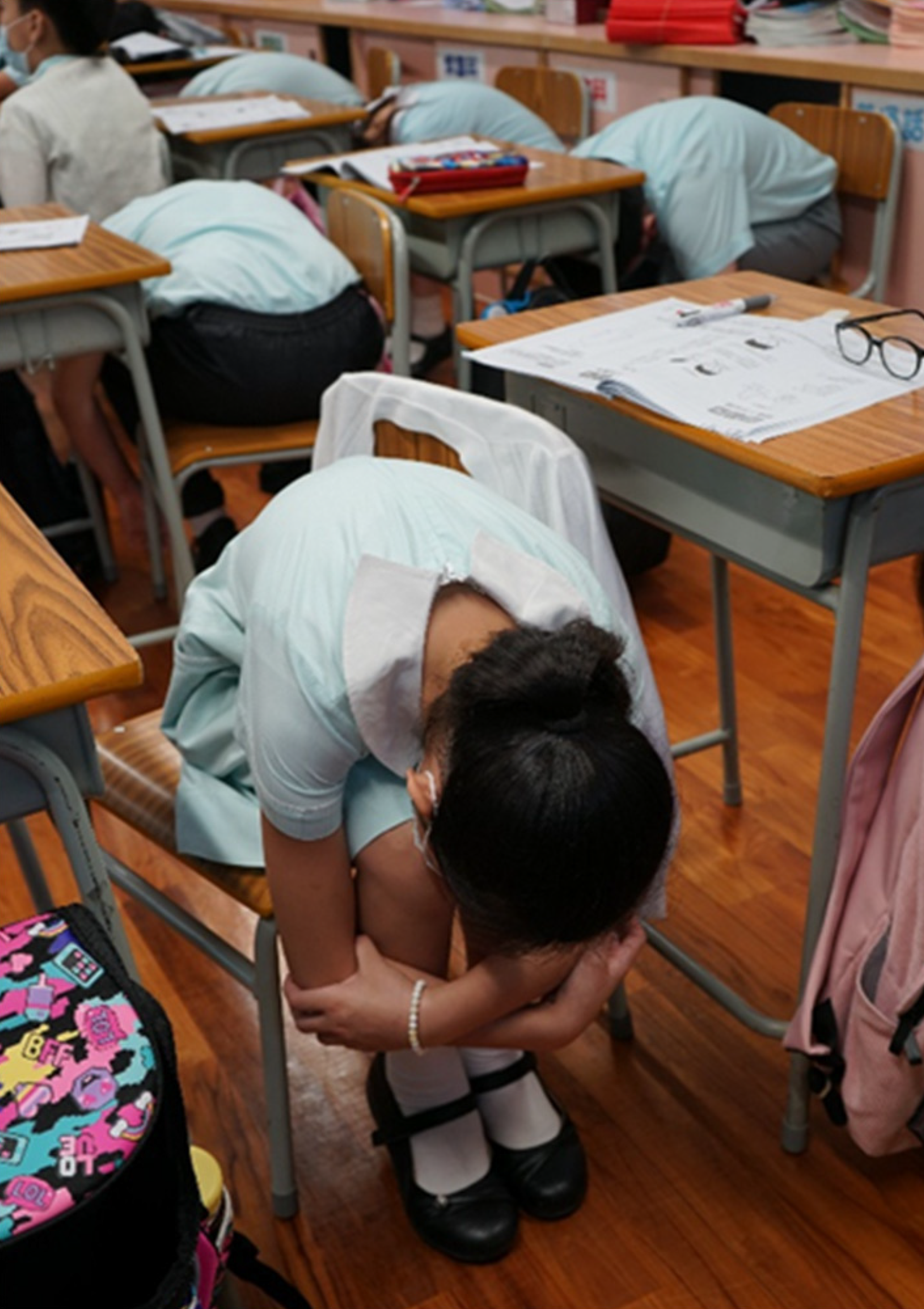Bonham Road Government Primary School
Promoting Mental Health among Primary School Students
To take care of the mental health of students, our school has begun promoting “mindfulness” since the 2020/21 school year. Our objective is to develop positive thinking in students by strengthening their abilities to self-regulate emotions and improving their concentration through mindfulness practices.
Practising mindfulness to promote mental health
As suggested by American scholar Dr Jon Kabat-Zinn, mindfulness is the awareness that arises from paying attention, on purpose, in the present moment and non-judgementally. In the school context, students, parents and teachers alike are under mental stress because of study or work. We recognise that mindfulness offers a way for them to master relaxation techniques through focused breathing exercises, develop self-awareness, become more aware of their own emotions, and eventually achieve better mental health. In recent years, the application of mindfulness in the field of mental health has drawn much attention. Since joining the Jockey Club School Mindfulness Project in 2020, our school has designed various mindfulness teaching activities and offered training for teachers and parents.
Teamwork and parents’ participation
Led by the Special Educational Needs Coordinator (SENCO), the student support team works together with the guidance team to take forward the mindfulness project among three target groups, i.e. parents, students and teachers. At the outset of the project, we organised a talk and several workshops on mindfulness to introduce parents to the pathway and purpose of promoting mindfulness in our school. We believe that parental support is pivotal to the successful implementation of the project.
Diversified mindfulness activities
The project comprised a series of mindfulness activities, including Mindfulness Bottle DIY Workshop, Mindfulness in 21 Days and 330 Mindfulness Break.
In the Mindfulness Bottle DIY Workshop, students were introduced to the concept of mindfulness through the making of mindfulness bottles, a tool that helps them calm down during mindfulness practice. Fascinated by these cute little bottles of floating glitters, students were attracted to explore this new experience of mindfulness.

Adorable “mindfulness bottles” make mindfulness activities enjoyable for students
Mindfulness in 21 days, the highlight of the project, introduced different forms of mindfulness practices, such as breathing exercises, mindful eating, balancing and stretching, throughout the 21-day period. Accompanied by an audio guide for 21 days in a row, students explored the basics of mindfulness, and learned to observe their physical sensations and state of mind objectively and pay attention to their own emotions and conditions non-judgementally, thereby gaining self-awareness, improving their concentration and regulating their emotions.
To make mindfulness a part of everyday life, we engaged students in the 330 Mindfulness Break with a wide range of learning tasks to help them keep up with daily brief mindfulness practice after the 21-day training. Under a reward scheme, students were encouraged to make good use of online resources and continue practising mindfulness at home even during suspension of face-to-face classes or holidays.
Whole School Approach with enhanced training
With the adoption of the Whole School Approach, every teacher in our school plays a part in guiding students through the mindfulness activities. It is therefore necessary for all of them to undergo pre-launch basic training. In addition, as one of the pilot schools of the project, one teacher each from our student support team and guidance team attended a training course, which covered in detail the characteristics of each exercise and the main features of the student version of Mindfulness in 21 days. The two teachers could then share what they learnt and experienced in the course with their colleagues.
The varying circumstances of different schools have made it difficult for them to promote mindfulness, not least amid the changing development of the epidemic. By joining the monthly online exchange sessions, seed teachers of pilot schools share their schools’ experiences of promoting mindfulness. They discuss the areas requiring attention, reveal the key to successful implementation, go into the details of the process, and explore ways to incorporate mindfulness into teaching. Through sharing with peers, seed teachers become more confident in implementing mindfulness projects in schools. Through efforts dedicated to the three target groups, i.e. students, parents and teachers, we have gradually developed a culture of mindfulness on campus.

“Place one hand on your chest and one on your tummy …” is the mnemonic for mindfulness practice
An imperceptible and gradual influence on students
While we have introduced mindfulness activities for just two years, mindfulness has already taken root in our school. From the observation of teachers and feedback from parents, it is evident that mindfulness has had positive impacts on students. In the past, some students would snivel and throw a tantrum when encountering difficulties in class, but mindfulness practices, such as breathing exercises, have helped them stay calm and positive and soothed their minds. In one of the parents’ workshops, a parent shared her experience in practising mindfulness with her autistic son. She recalled that her son used to get overexcited easily and even become uncontrollable at play, and would get mad when running into difficulties. After practising mindfulness, the child has become aware of his own physical sensations and has been able to recognise his unsettled emotions or feverish excitements. He can calm himself down by counting his breath as in a mindfulness exercise. Observing the change in her child, the parent has felt less stressed in taking care of him, and their relationship also improved greatly.
Our teachers have indicated in a survey that the mindfulness project is effective in improving the mental well-being of students. They are thus supportive of continuously guiding students in practising mindfulness. As the coordinator of the project, I understand that there is no magic in mindfulness activities. Students will not become attentive and capable of handling negative emotions straight away. That said, I have witnessed that some students who were reluctant to take part in mindfulness activities in the beginning are now willing to keep it up after almost two years of practising. I believe that the experience accumulated has imperceptibly helped them brave adversities and strengthened their resilience by enabling them to take good care of their body, mind and spirit. Mindfulness practice is indeed effective in promoting students’ mental health.


Different exercises in mindfulness practice help students relax both physically and mentally
